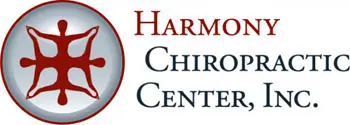A New Treatment Technique: A New Way to Decrease Pain and Improve Function
Dr. Bryan D. Royer recently
became certified in the Graston Technique® after having completing the final
module of the program. This remarkable procedure allows the clinician to detect
and treat areas of “scar tissue” or adhesions in muscles, tendons and ligaments
that can lead to pain and impaired movement. This technique is utilized to
treat athletes in over 60 NCAA, professional and Olympic sports teams. Dr.
Royer is the only clinician in the Toledo area certified to utilize this
technique.
In the healing
process, our body attempts to repair muscles, tendons and ligaments with “scar
tissue”, much like the scar that forms on the skin when you have scraped or
banged your knee. Scar tissue is not as strong and flexible as normal, healthy,
undamaged tissue. Over time we can have a build up of this fibrous scar tissue,
particularly in the muscles, tendons and ligaments that get a lot of use. This
can lead to pain and decreased range of motion because this replacement tissue
lacks the strength and flexibility of healthy tissue (in some areas it may even
compress a nerve causing numbness and tingling).
The Graston Technique allows clinicians to better detect and treat restrictions in the muscles, tendons and ligaments because it involves the use of six different stainless steel instruments, each specially shaped to treat specific areas of the body. Dr. Royer glides the instrument along a patient’s muscle, tendons or ligaments and it acts like a “scar tissue” stethoscope. When knots or bands of scar tissue are encountered, both Dr. Royer and the patient sense a restriction or a granular feeling. The instrument can then be used to “break up” this restriction. Stretching exercises are then used to promote healing of the fibers so that they behave as normal, healthy tissue.
The benefit of the Graston Technique is not only found in the detection of restrictions or adhesions, but also in the degree of improvement that takes place in a short amount of time. Unfortunately, the unaided hand is hard pressed to detect and break up as much scar tissue as the stainless steel instruments can. When the Graston Technique is coupled with the necessary strengthening and stretching exercises, it provides a great aid to the chiropractic adjustment and the patient gets better much quicker and more completely.
Some conditions
that respond well to Graston Technique are strains & sprains, chronic
injuries, shoulder pain, knee pain, painful scars and repetitive stress
disorders like tennis elbow and carpal tunnel syndrome.
MORE
INFORMATION ABOUT DR. ROYER
Dr. Bryan D.
Royer has been practicing chiropractic medicine in the Toledo area since 2005. He graduated summa
cum laude as the class salutatorian from the National University of Health
Sciences (NUHS) in 2004. Dr. Royer’s earned a Bachelor of Science with a major
in biology from the University
of Dayton in 1999 and
another Bachelor of Science with a major in human biology in 2002 from NUHS. He
is the only Board Certified Chiropractic Neurologist practicing in the Toledo
area. He is a member of the American Chiropractic Association, the Ohio State
Chiropractic Association, the Michigan Association of Chiropractors, the
Northwest Ohio Chiropractic Association, the ACA Council on Neurology, the
American Academy of Spine Physicians and the KinesioÒ Taping Association.
Dr. Royer has
taken extensive post-graduate classes in KinesioÒ Taping, Graston
TechniqueÒ, Activator
Methods, functional neurology, clinical nutrition and impairment ratings for
disability evaluation, as well as other seminars. He focuses on neurological
and musculoskeletal problems in his practice but also enjoys helping people
with nutritional deficits and allergy problems.
Dr. Royer
focuses on educating his patients and the community on how to promote a healthy
lifestyle. He is currently an instructor in Anatomy & Physiology and
General Biology at Owens Community College.
